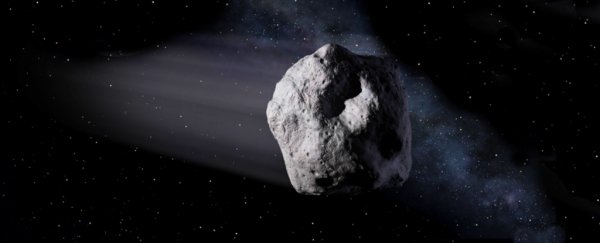If you spend any time around the internet traps, you may have noticed that there's a bit of an asteroid frenzy going on.
One has already gone past us - on Monday, a space rock 'the size of a jumbo jet' flew quite close to our planet.
On Friday, astronomers are expecting a larger one; but despite what tabloids will tell you about it's "imposing" size or breakneck speed, it's mostly business as usual if we take a look at NASA's chart of close approaches by near-Earth objects (NEOs).
As is usually the case with these whooshing space chunks, the first asteroid did not pose a threat. But it was interesting nonetheless, since skimming our planet at just 1.1 times the average distance to the Moon, it was slated to be the closest flyby of the year.
Meanwhile, the other visitor doing the tabloid rounds (and, for some reason, compared to the Great Pyramid of Giza in some places), is asteroid 2019 DN, expected to go past us on 8 March at around 16:19 UTC.
Preliminary scans have revealed that it measures roughly 90 to 200 metres in diameter (295 feet to 656 feet), but you don't need to run for the hills. 2019 DN will be more than 10 times farther out than the Moon, so this is certainly not a doomsday situation.
We've been through this before. Just last November, some keen observers of NASA's asteroid watch data kicked up a frenzy about giant asteroids "skimming" Earth, but everything that's beyond Moon's orbit is hardly worth a worry.
In fact, 2019 DN isn't even the biggest asteroid coming this month - the slightly larger 2019 CD5, measuring 100 to 230 metres, should come by on 20 March, and it's going to be slightly closer than this Friday's visitor, too.
It's easy to get excited when we remember that space rocks are constantly hurtling past Earth, but we'd suggest not to lose any sleep over it.
While there are plenty of NEOs yet to be discovered, the vast majority of them are probably harmless.
"Very few of these bodies are potential hazards to Earth, but the more we know and understand about them, the better prepared we will be to take appropriate measures if one is heading our way," according to NASA.
The next time you see tabloids mention a doomsday asteroid hurtling our way, we suggest you check out NASA's Near Earth Object program's website for some actual data.
